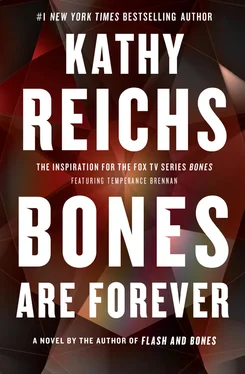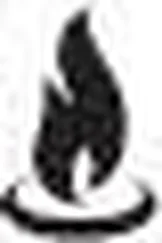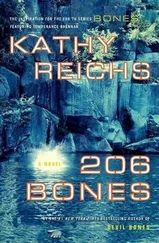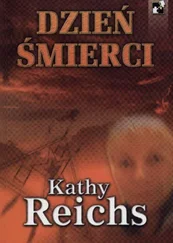On hearing the bells, Mao turned. “Got reservations?” Her vocal chords had seen a whole lot of smoke.
Ryan and I looked at each other, surprised. It was three in the afternoon. The place was empty.
“Gotcha!” Mao laughed, showing gaps once occupied by molars. Then she swung the spatula to indicate we could sit wherever.
We chose a graffiti-scarred table next to a window shaded by venetian blinds. Through the slats, I could see trees and blue picnic tables. The adjacent wall was layered with photos and business cards, many faded to illegibility.
“Good thing I’m not the ‘I told you so’ type.” I continued pressing my point. “Because I’d be saying it.”
“We’ll see.”
When Mao appeared at our table, Ryan and I both ordered fish and chips. Rainwater had sent us to Bullock’s saying everything on the menu came straight from the lake.
“Let’s hope we’re not too late.” When Mao was back at the griddle, I rolled on. “Again.”
“Rainwater said no one’s entered or left the house since Snook got back from the store.”
“Ollie asked him to talk to her?”
“About ten minutes ago. But if she refuses, he can’t go inside.”
Mao brought our drinks. Diet Coke for me. Moosehead for Ryan. I hoped his choice didn’t offend our buddy on the wall.
Ollie arrived as Mao was delivering our food. His face was tense, his cheeks flushed with asymmetrical raspberry splotches. I knew the look. The hunt was on, and he was loving it.
Turned out Ollie and Mao knew each other. Her name was Mary.
“What you cooking today, sweetheart?” He gave her his trademark jaw-hitch maneuver.
“Cod, trout, and pike.”
“What’s good?”
“Everything.”
“Pike.”
“Excellent choice.”
Ollie waited until Mary was out of earshot, then spoke to me. “Nice. Very few have the poise to carry off the hamburger-chin look.”
“I used to model for Chanel.”
“Really?”
“No. Who’s Zeb Chalker?”
Big grin. “Bola’ed you over, I hear.”
My look suggested I wasn’t amused.
“Chalker’s MED.”
I tipped both palms in question.
“Municipal Enforcement Division. They’ve got maybe six constables, a couple of supervisors, some patrol cars and snowmobiles. Do mostly traffic, animal, and crowd control. And, of course, koi ponds.”
“Hilarious. What about Scarborough?”
“He’s in town, all right. Staying with one of his greaseball pals.”
“Unka and Castain know he’s here?”
Ollie’s eyes rolled to Ryan. “Both claimed to be unacquainted with the gentleman.”
“They denied Scar was trying to cut in to their action?” I asked.
“They didn’t admit to having any action. Hadn’t a clue the meaning of my questions. They’re honest citizens trying to make a buck leading outdoor adventures for tourists. Castain offered to take me bird-watching.”
Mary arrived with Ollie’s root beer. Left.
“So you got nothing,” Ryan summed up.
“I learned that neither Unka nor Castain cares for me.”
“Indeed.”
“Both called me unpleasant names. Unka was more creative.”
“You had to kick them?”
“We know where to find them.”
“Someone’s working a tail?”
“Hadn’t thought of that.”
“Scarborough, too?”
“Hadn’t thought—”
“For God’s sake.” Already it had been a very long day. I was not up to their testosterone wrangling. “Knock it off.”
Ryan and I cleaned our plates. Then we sat in awkward silence until Mary delivered Ollie’s pike. While he ate, I provided further details of our visit with Horace Tyne.
“We ran the half sister,” he said when I’d finished. “Snook’s her married name. She was born Nellie France in Fort Resolution.”
“Where’s that?”
“The south shore of Great Slave Lake. Where the pavement ends.”
“Literally?”
“Yes.”
“So people in Yellowknife might actually be unaware of Snook’s connection to Ruben.”
“It’s possible, though Chalker should know.” Ollie dipped a french fry in mayo and ate it.
“Rainwater’s with Snook now?”
“He’ll try making nice. If that fails, he’ll ask for a warrant. What’s your take on Tyne?”
“The guy’s a sleaze. But an environmentally conscious sleaze.”
“Friends of the Tundra.” Ollie dipped and popped another fry. “Never heard of it.”
“I was surprised to learn that diamond mining is big business here.”
“You haven’t noticed the banners on every lamppost?” Ollie made a marquis gesture with one hand. “Yellowknife, Diamond Capital of North America. There’s a big-ass rock on the official city logo.”
“You ever hear of this guy Fipke?”
“You’re kidding.” Ollie regarded me with the same incredulity Tyne had displayed. “Chuck Fipke’s a legend.”
“Fine. I’ll get a book.”
“Copies in every souvenir shop in town. Or google Fipke.”
“Is Tyne right about the caribou herds?”
“Some locals, mostly aboriginals, claim that diamond mining is disrupting the migration routes. It’s a hot issue up here. When De Beers proposed opening Snap Lake, some of the chiefs banded together. Set the project back years. Environmental-impact studies and all. Now De Beers wants to bring another operation online. I forget the name.”
“Gahcho Kué.”
“That’s it.” Ollie bunched and tossed his napkin. “You should talk to Rainwater. He knows more about the mining controversy than I do.”
I was draining my Diet Coke when Ollie’s phone rang. The conversation lasted under a minute. I got little from his end. Except that he was irked.
“Snook stonewalled.” Jamming the cell back onto his belt. “Rainwater’s going to ask a judge to cut paper.”
“Now what?”
“Now we wait for someone to screw up.”
* * *
Three hours in my room produced an unplanned nap, a message from Katy saying she had news too important for e-mail, and voluminous information on Chuck Fipke and geological exploration.
Before booting my laptop, I knew that diamonds are carbon transformed by extreme heat and pressure into the hardest, clearest mineral on earth. That because of their rigid tetrahedral molecular structure—a triangular pyramid with four faces—a diamond can be cut only by another diamond or a laser.
I knew that the sparkly little rocks are pricey as hell. And that they create an eyeful of bling.
That was about it.
Every thirty minutes I’d interrupt my research to phone Katy. Each time her phone would roll to voice mail. Uneasy, I’d dive back onto the Internet.
In between dialing, I learned the following.
It takes forty-four to fifty kilobars of pressure at a minimum of a thousand degrees Celsius to change carbon into diamond. I understood the temperature but wasn’t sure the exact nature of a kilobar.
The appropriate combo of heating and crushing existed a few billion years ago at depths of eighty to a hundred and twenty-five miles in rock formations called cratons, dense old slabs of continental plate.
Later, underground volcanoes sent magma—or molten rock—minerals, rock fragments, and occasionally diamonds bubbling up through the cratons. The mixture expanded and cooled along the way to form either carrot-shaped pipes to the surface, or wide flat underground structures called dikes. It then solidified into rock called kimberlite.
Most diamondiferous kimberlites are associated with cratons from the Archean era, an early part of the Precambrian, when the earth was much hotter than today. Much hotter. Many kimberlite pipes lie underneath shallow lakes formed in inactive volcanic craters called calderas.
Читать дальше









